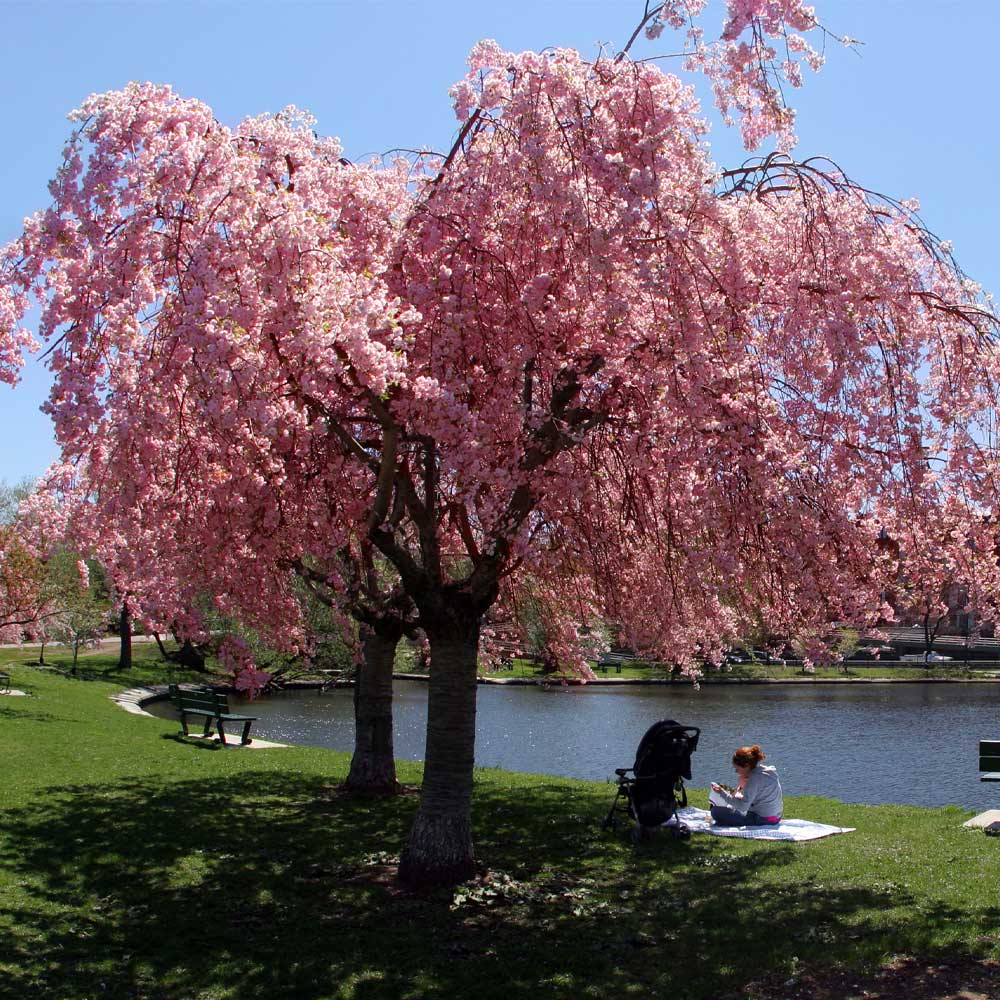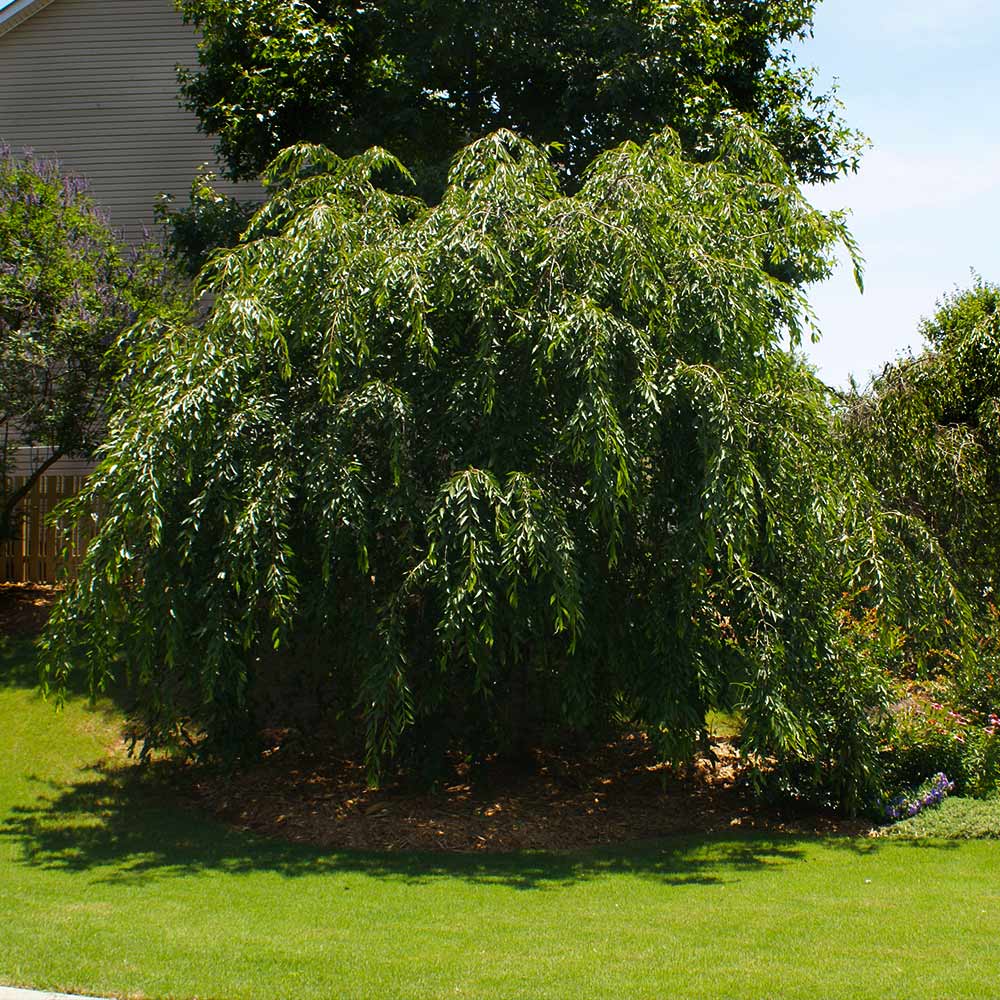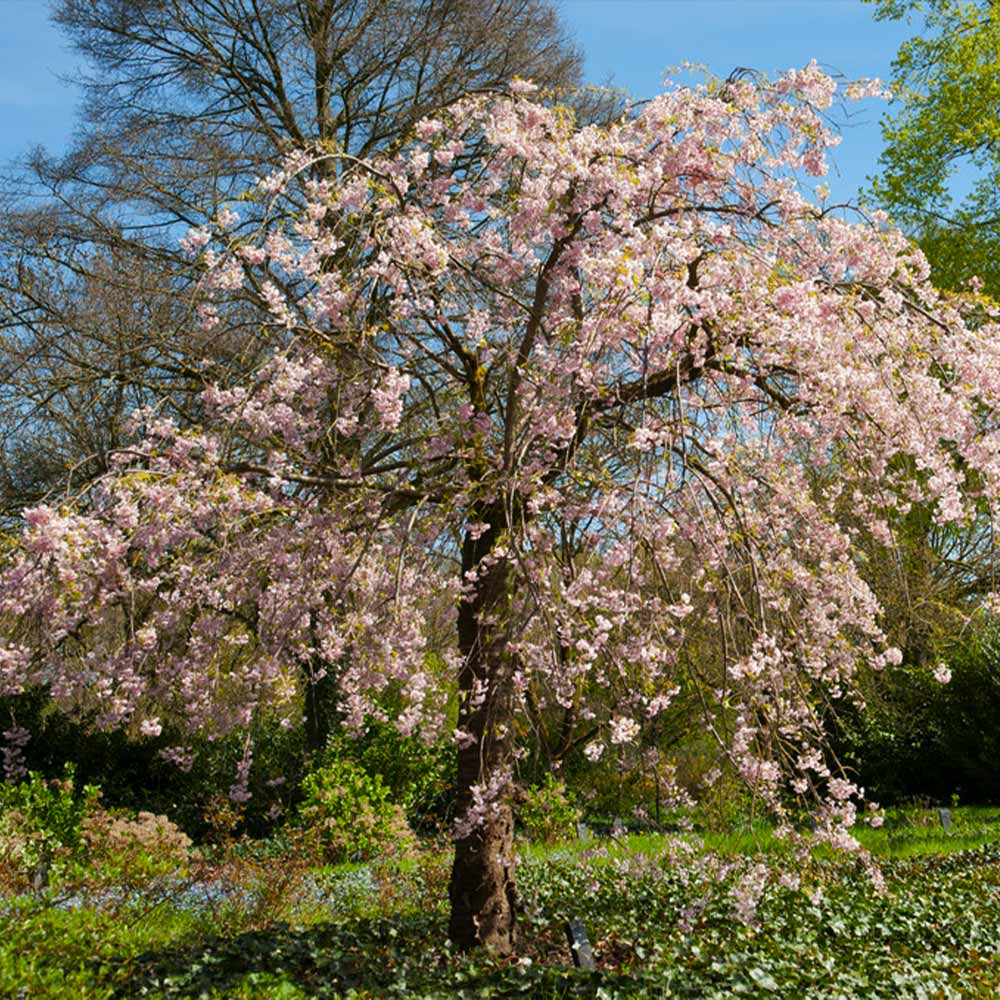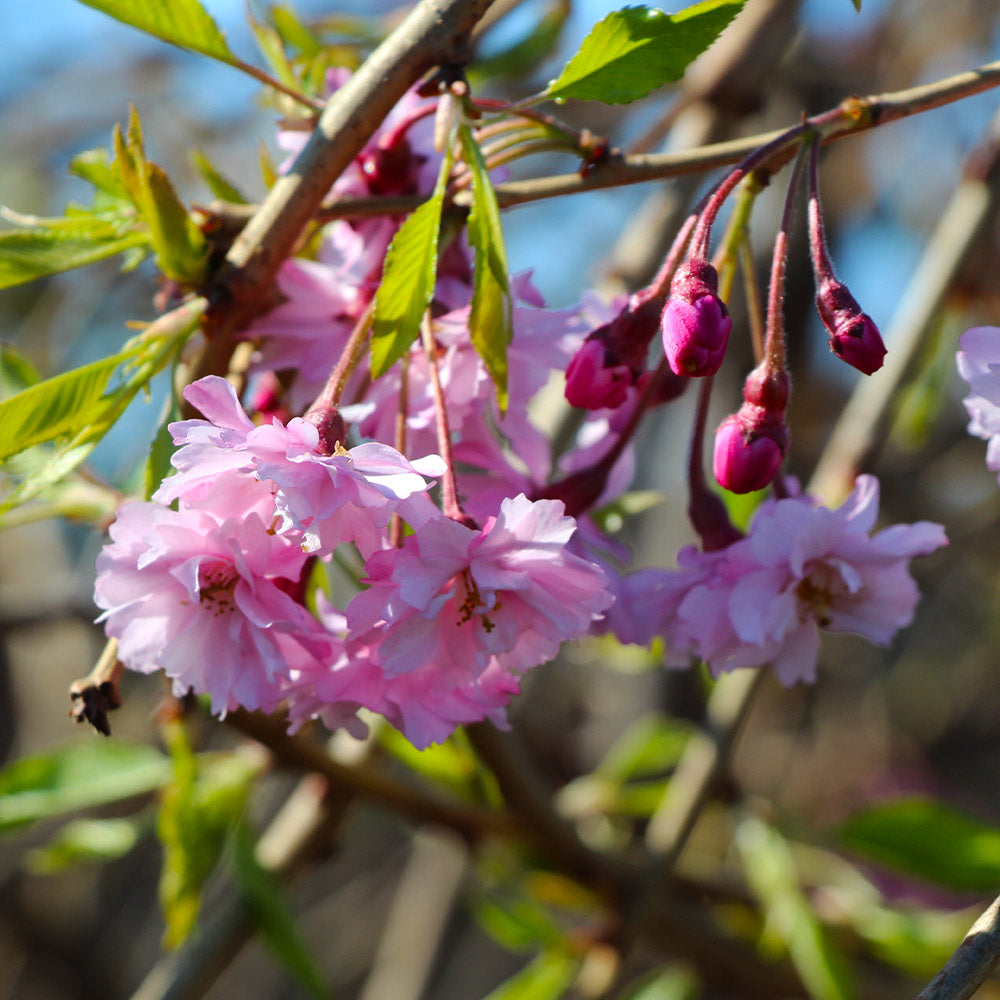Weeping Branches, Bright Blooms, and Easy Growth
Why Double Pink Weeping Cherry Trees?
Beautiful pink double blooms emerge each spring on the wonderous Pink Weeping Cherry Tree and provide an explosion of color through the summer. This fast-growing tree features branches that grow upright and then gracefully cascade down like an elegant chandelier, fitting right into small spaces but making a big impression.
The branches that are studded with pink blossoms during the spring and have bright yellow leaves in the fall. Basically, your tree will be one of the brightest on the block. As temperatures drop in the winter, the graceful weeping branches still add beauty to the landscape, even through the snow.
Even better? It's one of the longest-lived flowering trees available. It will flower heavily from a young age and grow more attractive with bigger and better flowers each year. So, a profusion of blooms is a given, even in poor soil, heat, and drought.
Why Fast-Growing-Trees.com is Better
But the best part about your Pink Weeping Cherry? We’ve planted and grown your Pink Cherry at our nursery for months, long before it ships to your doorstep. Now, you get a well-developed root system (no bare-root!) and more mature branching. We've put in the extra work so that you get a Flowering Cherry that thrives in your landscape.
This tree is a customer favorite, so be sure to order yours now while they're still available! The only catch when it comes to the Pink Weeping Cherry? It's never in stock for long...get yours today!
Planting & Care
1. Planting: They grow best in moist, well-drained, acidic soil (around 6.5 to 7.0 pH) in a spot that receives full to partial sun.
Dig your hole just as deep and twice as wide as the root ball. Leave a small mound of dirt in the center of the hole to set the root ball on and carefully spread the roots in the hole. You’ll want to keep the crown (tip of the root ball) of the tree roughly an inch above the surrounding soil level. If it doesn’t reach that point, just add a bit more dirt to the mound underneath.
2. Watering: Water the tree when the top 2 inches of soil dries (a slow trickle with a garden hose for about 10 or 20 minutes is recommended so the water doesn’t bead away from the intended watering area). This could be about twice a week in the summer, or every three weeks in the fall. Watering depends on several factors such as the soil type, rainfall amounts, and temperature.
3. Fertilizing: Flowering Cherries will not require fertilizer for the first two years. Heavy mulch around the base of the tree protects and nurtures the soil as well. When you are ready, fertilize the tree with nitrogen. Apply 1/10 pound of actual nitrogen per year for each year of the tree’s age, with a maximum of 1 pound per year. Apply it once in the spring, or spread the nitrogen amount into 2 to 4 equal applications over the spring and summer.
4. Pruning: Removal of the current year’s old, faded flowers and fruit clusters will promote flower buds for the following season. Prune the cherry tree during the dormant winter period to remove dead branches.







Comment